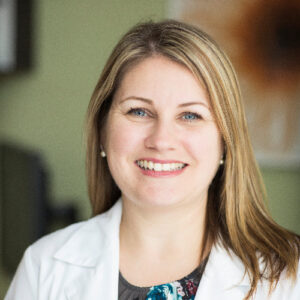One year later: Administrators speak out on 3.0
Last August, Long-Term Living gauged the mood and outlook of four administrators as they readied their teams for one of the largest operational changes to impact the industry since 1999. Like preparing for battle, these administrators had hunkered down to tackle the MDS 3.0 transition, emphasizing education, teamwork and communication at their communities. Overall, the leaders-if not exactly thrilled about the changes-were fairly confident in their abilities to adapt and move forward.
One year later, Long-Term Living returned to these same administrators to report on their experiences with 3.0-the positives, the negatives and the lessons learned. Look for their comments throughout this special section.
Eli Pick, Executive Director, Ballard Rehabilitation, Des Plaines, III.
The MDS was intended to be a data-gathering instrument, which then morphed into a reimbursement instrument and has morphed again to incorporate quality measures. As a result, it’s like a one-room house that you keep adding rooms to. They should chuck out everything and redesign the whole process, but do it around an ability to have some core components and modules that are oriented to the different populations to be served. But CMS is not willing to do that and I’m not sure they can afford to do it.
From a financial standpoint, we’ve done exceedingly well because the new process has been reoriented to recognize the resources necessary to care for medically complex populations, which is the majority of the population we serve. We’ve seen a rate increase that’s gone up $180 a day on average.
Elizabeth Kaeser, Administrator, Inova Loudoun Nursing and Rehabilitation Center, Leesburg, Va.
We did a lot of work getting everyone up to speed. I educated all disciplines, which was a large investment in terms of time and money. I purchased four Toughbook laptops; three for the MDS specialists and a fourth for all the disciplines to use, and that has been the biggest time-saver.
This instrument is now so complicated I can’t imagine what small nursing homes are going to do in terms of trying to train someone. With 2.0 you could get up to speed pretty quickly. I break out in cold sweats at night thinking about what we will do if we lose one of our people.
The number of MDSs has also increased tremendously with the 3.0-25 percent more. I do worry about how we’re going to have enough of these MDS nurses to go around and it’s such a steep learning curve for nurses who want to go into it. You better be paying them very well; they’re worth it and they hold the key to reimbursement for the facility. Your survey team as well has to be up to speed. And with an instrument that is so complex, so arcane, how do your surveyors keep up with all of this?
Tim Dressman, Executive Director, St. Leonard Franciscan Living Community, Centerville, Ohio
From a bird’s-eye view there are no positives [compared to] the last instrument. The instrument isn’t the issue. It’s the admission of more Medicare people. If I had a chance to change the MDS I’d get rid of it. There’s a lot of paperwork with a purpose for generating a scoring level to get your money. I don’t think the money is getting any better; it’s getting worse.
We brought in [consultants] Plante-Moran and if anything it helped create a bit more teamwork with the interdisciplinary team. It’s probably a bit better because of administrative coaching. Our MDS nurse doesn’t seem to be up to her arms in anything more than she was a year ago. Our residents? It’s just another thing they’ve got to do. They take it in stride. How would I change it? How about getting rid of it?
Kris Graphman, Administrator; and Colleen Fenstermaker, MDS Coordinator, The Forum at the Crossing, Indianapolis
Graphman: We talk to others who have said they’ve had such a hard time with making the transition to 3.0, but all in all we’ve done very well here. I attribute it to being a team and having a positive attitude about it.
Fenstermaker: Kris made it clear during the [preliminary 3.0] meetings that we were going to pull together as a team and made it about positives, not negatives. I saw him out there doing everything with the team. And, we have all [staff] participating in the interview process instead of individuals doing their own piece.
Graphman: It gets team members outside of their box-doing the clinical piece, the mood piece; it gives them the opportunity to do more. If there’s a question or they’re not familiar with something, the [staff person] can go to the charge nurse or unit managers for help.
Fenstermaker: Everyone agrees that the discharge process is turning into a nightmare. We used to have a very brief discharge assessment-a couple of pages-and now it’s 26 pages of information. We have a lot of Medicare people that leave and come back and the volume with the discharges is unbelievable.
I Advance Senior Care is the industry-leading source for practical, in-depth, business-building, and resident care information for owners, executives, administrators, and directors of nursing at assisted living communities, skilled nursing facilities, post-acute facilities, and continuing care retirement communities. The I Advance Senior Care editorial team and industry experts provide market analysis, strategic direction, policy commentary, clinical best-practices, business management, and technology breakthroughs.
I Advance Senior Care is part of the Institute for the Advancement of Senior Care and published by Plain-English Health Care.
Related Articles
Topics: Articles , MDS/RAI











